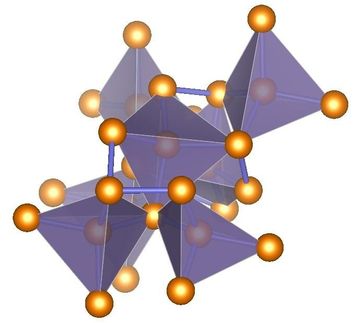An UV detector based on nanocrystals synthesized by using ion implantation
Advertisement
Scientists at the Lobachevsky University have been working for several years to develop solar-blind photodetectors operating in the UV spectral band. In the field of electronic technology, this is an important task, since such devices cut off emission with a wavelength higher than 280 nm, which helps to avoid interference from sunlight and to record UV emission during daylight.

Schematic representation of the photodetector with Ga2O3 nanocrystals encapsulated in Al2O3 matrix (a), TEM image of the implanted Al2O3 film containing Ga2O3 nanocrystals (b), and responsivity spectra of photodetectors measured at different voltages (c).
Lobachevsky University
"Due to their high sensitivity to deep UV emission and insensitivity to sunlight, solar-blind photodetectors provide a wide range of important applications including the ozone damage detection, jet engine monitoring and flame detection," says Alexey Mikhaylov, head of the laboratory at the UNN Physics and Technology Research Institute.
The main materials for creating solar-blind photodetectors are wide-gap semiconductors. Nizhny Novgorod scientists together with Indian colleagues consider Ga2O3 to be a promising semiconductor with a band gap of 4.4-4.9 eV, which cuts off emission with wavelengths higher than 260-280 nm and is capable of detecting emission in the deep ultraviolet range.
The existing methods for Ga2O3 synthesis are quite complicated and poorly compatible with conventional silicon technologies. Besides, the layers obtained by such methods often have many defects. The synthesis of Ga2O3 nanocrystals by means of ion implantation, the basic technology of modern electronics, opens up new possibilities for creating solar-blind photodetectors.
The spectral dependence of photoresponse for this photodetector demonstrates excellent solar-blind ultraviolet characteristics in the wavelength range of 250-270 nm, it also has a high responsivity of 50 mA/μW. The dark current of the photodetector is quite low and amounts to 0.168 mA.
The process of creating such a detector involves the synthesis of Ga2O3 nanocrystals in a Al2O3 film on silicon by ion implantation. The detector obtained by this method has been realized by the scientists for the first time in the world.
Thus, the joint work of the international team of researchers from the Lobachevsky University, the Indian Institute of Technology Jodhpur and the Indian Institute of Technology Ropar has demonstrated the possibility of manufacturing photodetectors that cut off solar radiation (solar-blind photodetectors) capable of working in the deep ultraviolet region and possessing the characteristics that are not inferior to the existing analogs. "By producing such photodetectors with the help of ion implantation, it will be possible to use the already existing "silicon" technologies and to adapt them to the manufacture of new-generation devices," concludes Alexey Mikhaylov.
































































